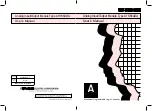
TRANSIT ENTRY | INSTALLATION GUIDE
Identification
24/30
8
IDENTIFICATION
The TRANSIT Entry reader is always reading (except when disabled with the read
disable input, see chapter 3.5.2). Automatically upon identification of a transponder
the relay will be activated, the ‘smile’ lights-up and an event message is generated
on the communication interface(s).
8.1
STANDARD OPERATING PROCEDURE
The TRANSIT Entry was designed to implement
secure handsfree access. The system reads at
distances up to 4 meters
(12 feet)
. This has great
appeal, especially in situations where people
cannot use their hands to present their ID badge.
Moreover it offers handsfree vehicle access to
gated areas. Vehicles are identified at range,
without having to open the window to present a card. Only line-of-sight between
transponder and reader is required.
On-site adjustable read-range in case of cross over reading (see chapter 7). On-site
adjustment of the frequency channel to avoid radio interference (see chapter 6).
8.2
USING THE MTR MODULE
The TRANSIT Entry reader can be featured with an
optional proximity and ISO compliant smartcard
interface, called Multi-Technology Reader Module
(MTR). This MTR interface will enable the reader to
read standard proximity cards and smartcard CSN,
allowing it to operate with existing credentials at
short range, when presented to the face of the
reader. See chapter 2.4 for more information about installing the MTR board.
The MTR eliminates the need for multiple readers mounted next to a door or gate.
Please refer to the MTR manual for more details. The following card types are
supported with the MTR:
•
120-125 kHz: HID prox, Nedap and EM read-only.
•
13.56 MHz: HID iClass CSN, MIFARE, ISO14443A and ISO15693.
Proximity cards must be presented to the circle on the front cover of the TRANSIT
Entry reader. The MTR reads from all supported transponder types their card serial
number. For Mifare Classic and Ultralight cards optionally the MTR can be configured
to read data from a (secured) sector. Configuration is done with a configuration card,
which can be programmed with the ‘Smartcard-Booster Config’ software. This
software can be downloaded from our website
Note
It is not possible to install
the MTR module together
with an additional interface
board, such as the TCP/IP
interface board.







































